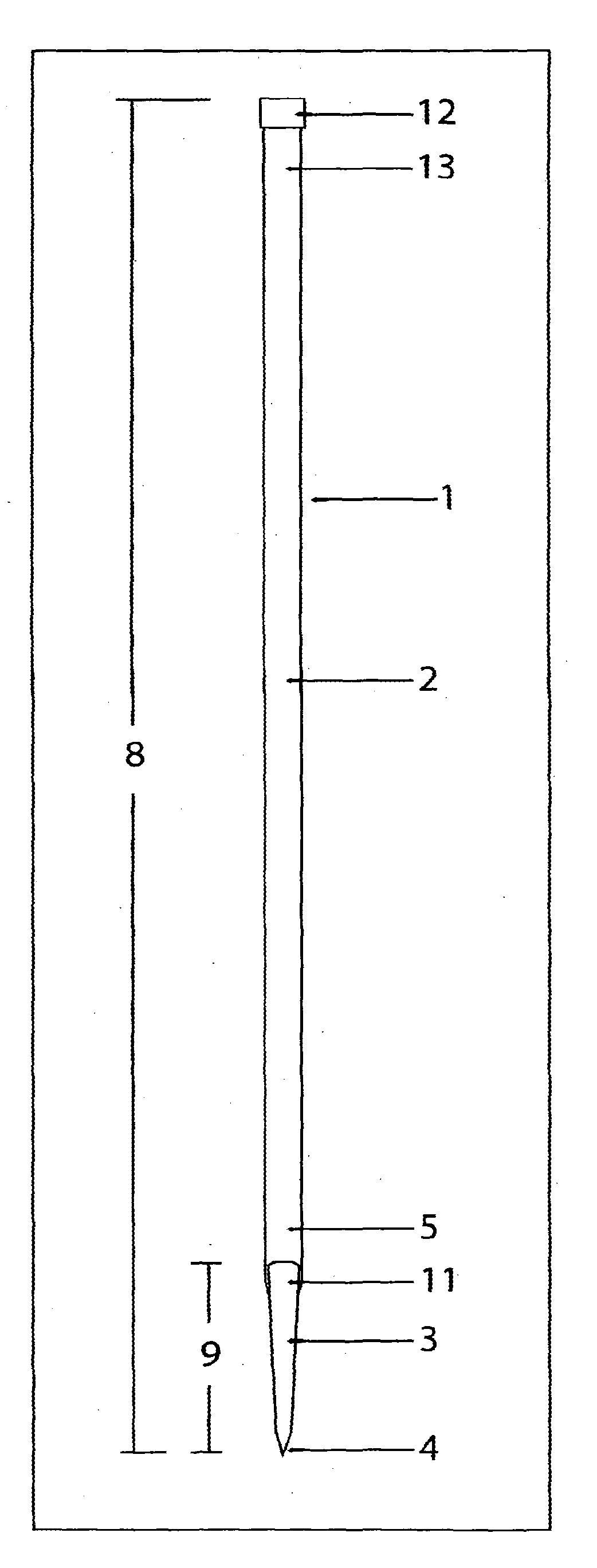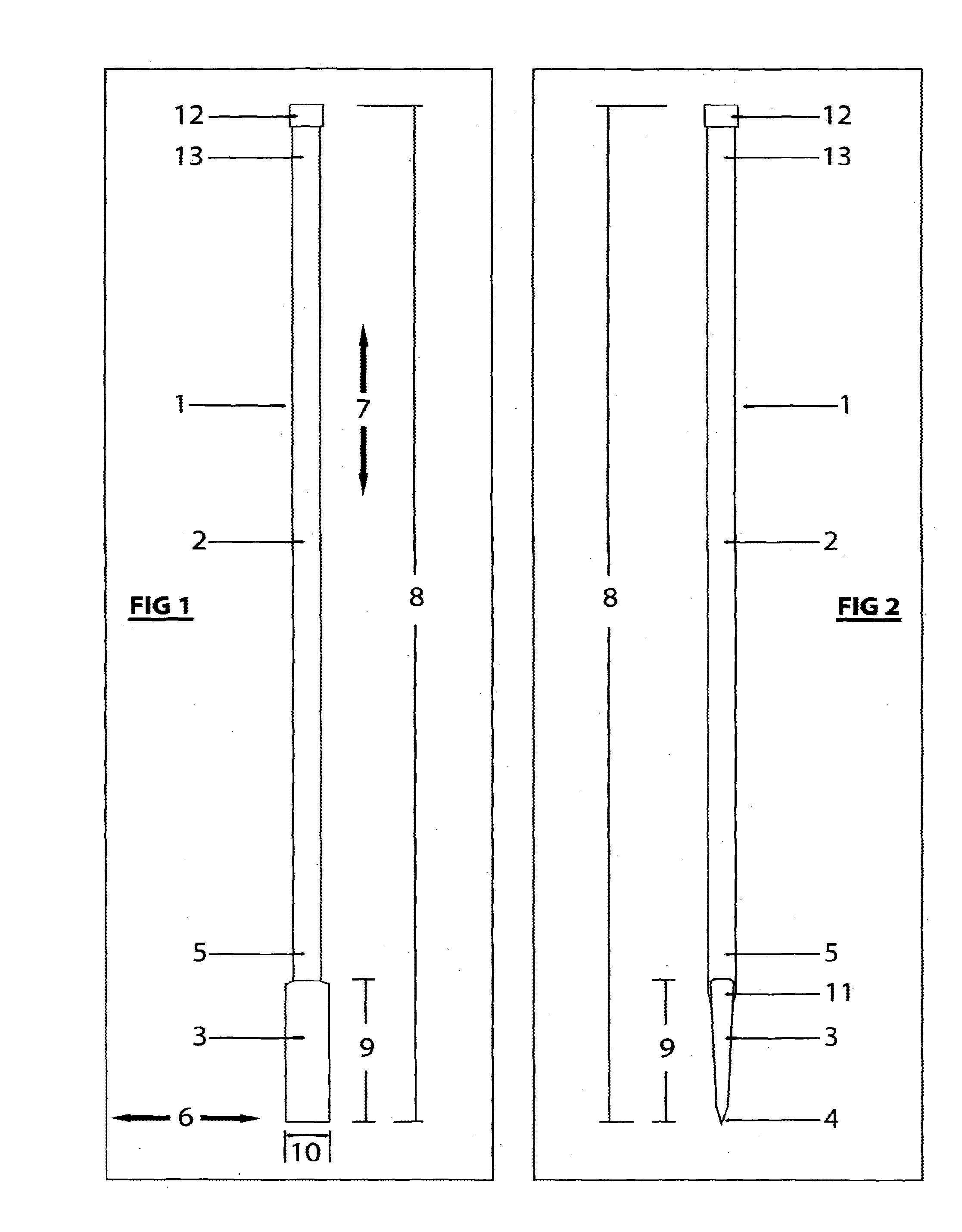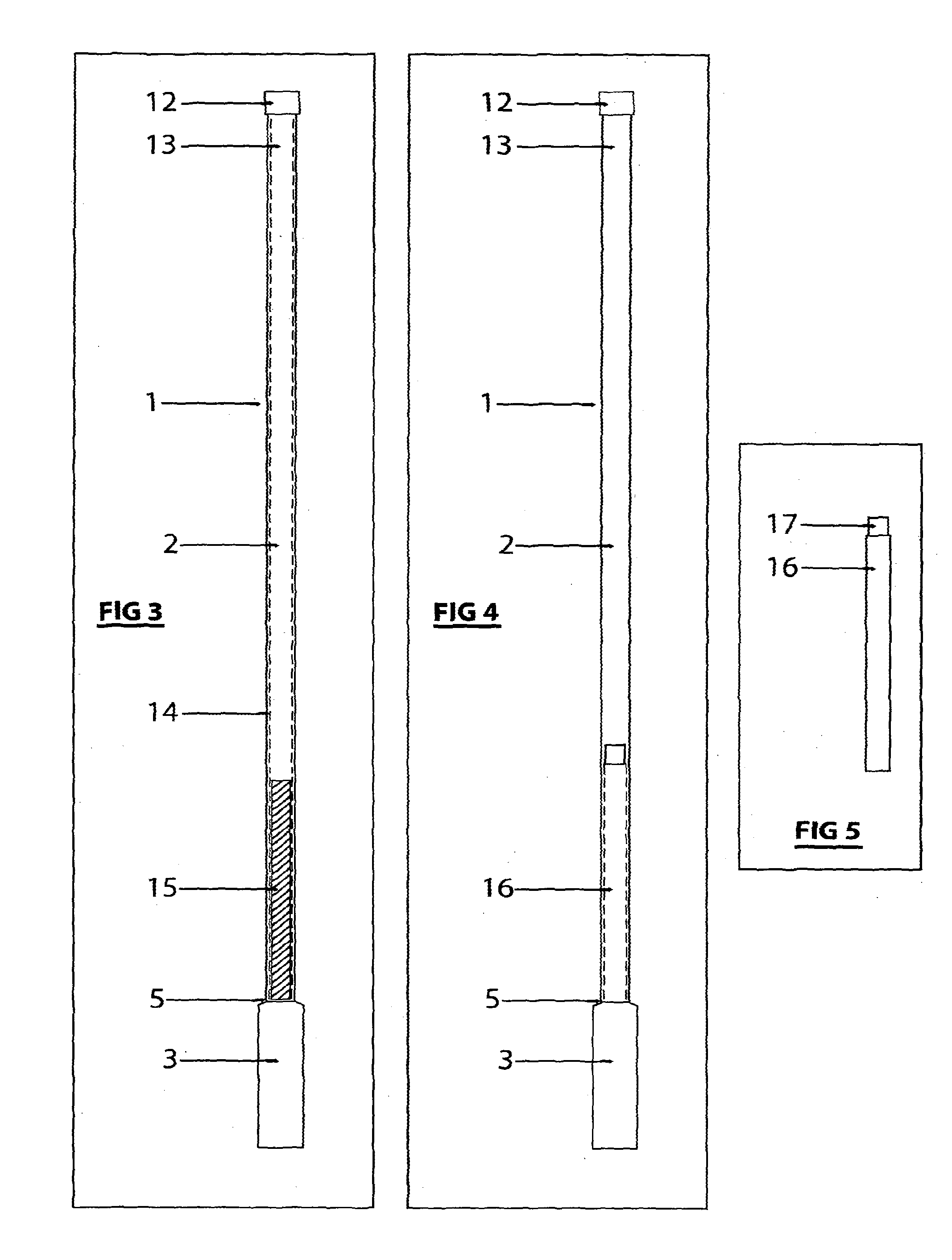Tools
a technology of tools and sledgehammers, applied in the field of tools, can solve the problems of ineffective posthole borers, ineffective posthole borers, and inability to operate, so as to increase the overall usefulness and impact the strength of sledgehammers, reduce the jarring effect associated, and increase the overall amount of momentum
- Summary
- Abstract
- Description
- Claims
- Application Information
AI Technical Summary
Benefits of technology
Problems solved by technology
Method used
Image
Examples
Embodiment Construction
[0078]The description of a preferred form of the invention to be provided herein, with reference to the accompanying drawings, is given purely by way of example and is not to be taken in any way as limiting the scope or extent of the invention.
DRAWINGS
[0079]FIG. 1: is a front view of one possible embodiment of the present invention,
[0080]FIG. 2: is a side view of the embodiment illustrated in FIG. 1,
[0081]FIG. 3: is a cut away view of the embodiment show in FIG. 1,
[0082]FIG. 4: is a cut away view of a different possible embodiment of the present invention, and
[0083]FIG. 5: is a view of a container used for housing a moveable material, as illustrated in FIG. 4.
DESCRIPTION OF PREFERRED EMBODIMENTS
[0084]Having regard to FIGS. 1 and 2, there is shown an impact tool generally indicated by arrow 1.
[0085]The tool has a handle 2, and an impact portion 3, with a cutting surface 4. The impact portion 3 is fitted to a first end 5 of the handle 2. As can be seen from FIG. 1, the arrangement and...
PUM
 Login to View More
Login to View More Abstract
Description
Claims
Application Information
 Login to View More
Login to View More - R&D
- Intellectual Property
- Life Sciences
- Materials
- Tech Scout
- Unparalleled Data Quality
- Higher Quality Content
- 60% Fewer Hallucinations
Browse by: Latest US Patents, China's latest patents, Technical Efficacy Thesaurus, Application Domain, Technology Topic, Popular Technical Reports.
© 2025 PatSnap. All rights reserved.Legal|Privacy policy|Modern Slavery Act Transparency Statement|Sitemap|About US| Contact US: help@patsnap.com



